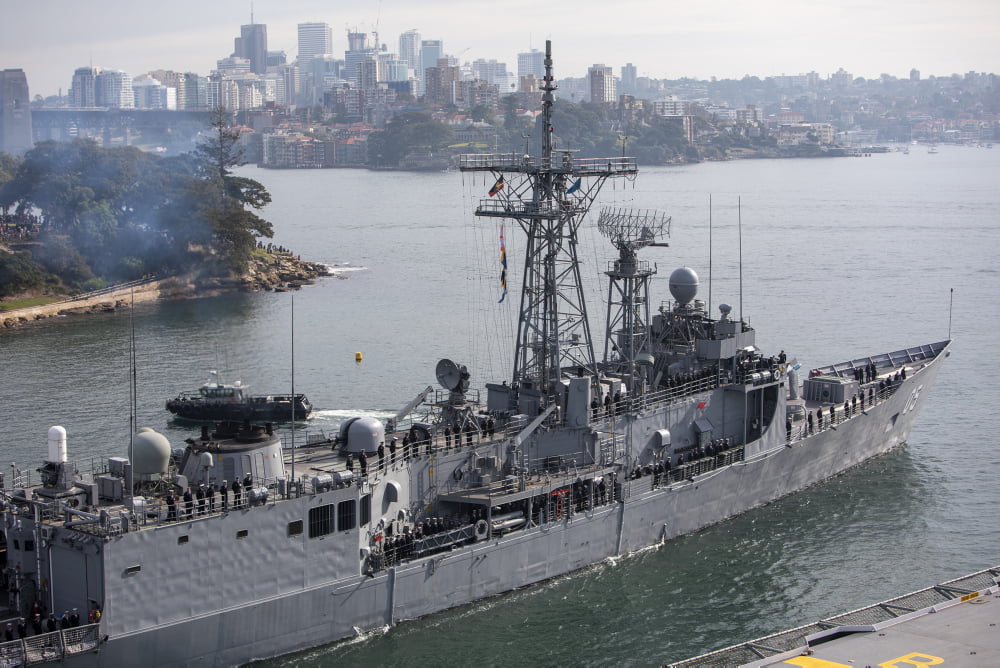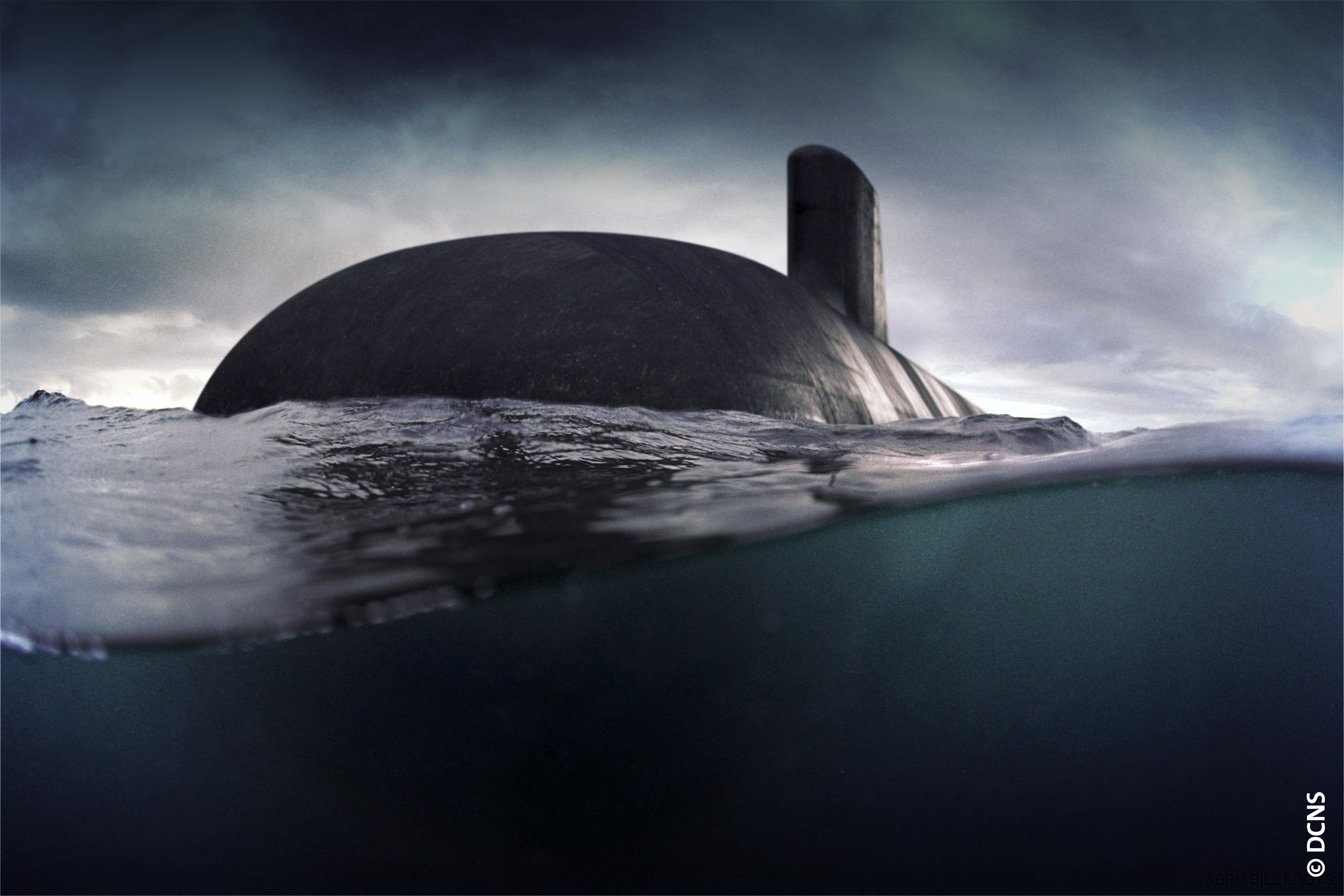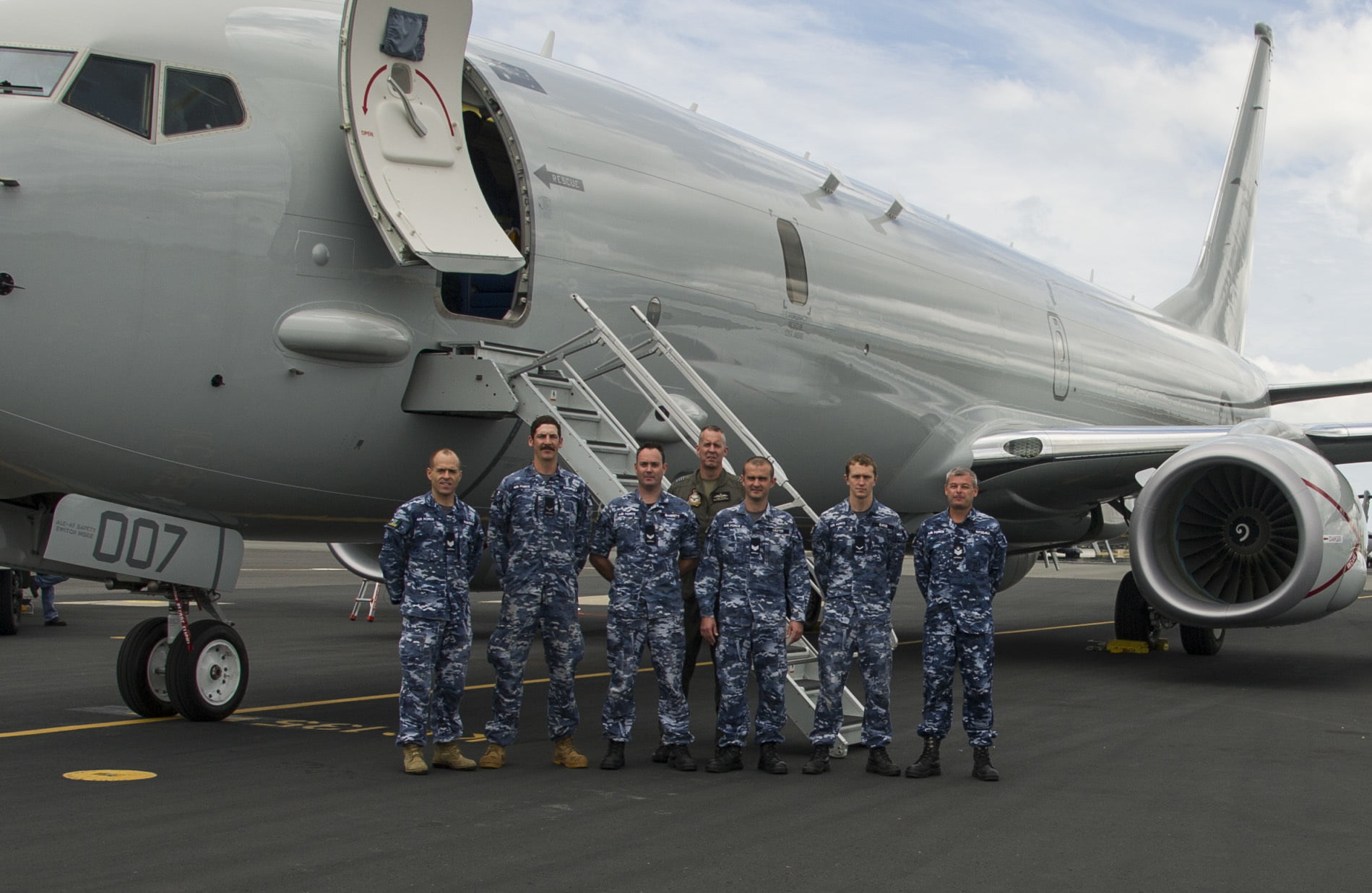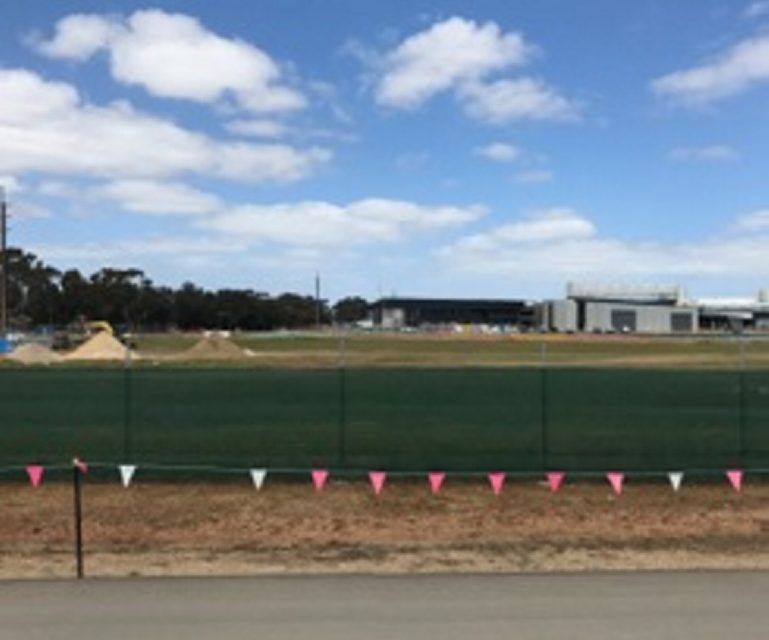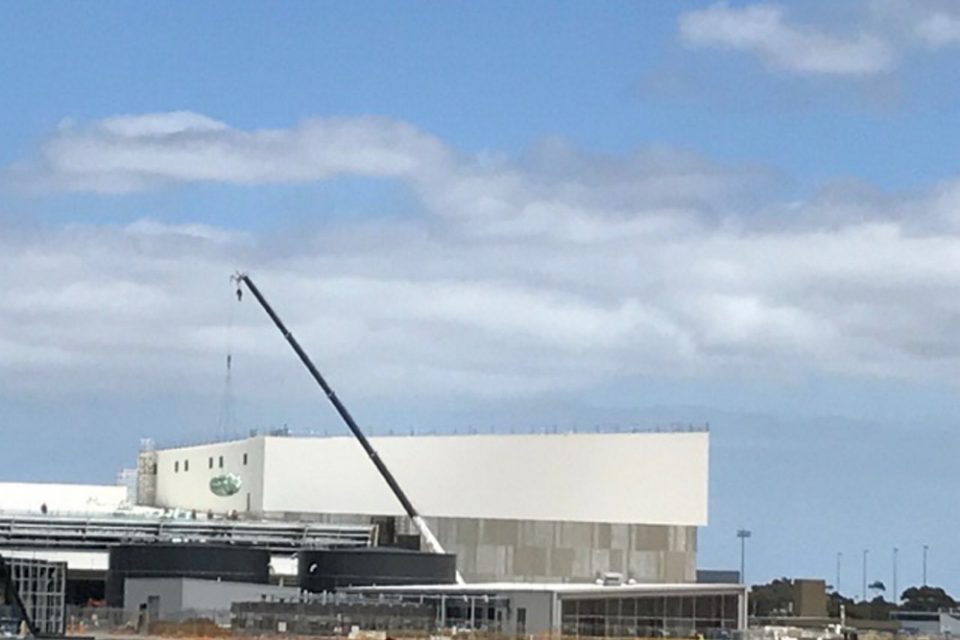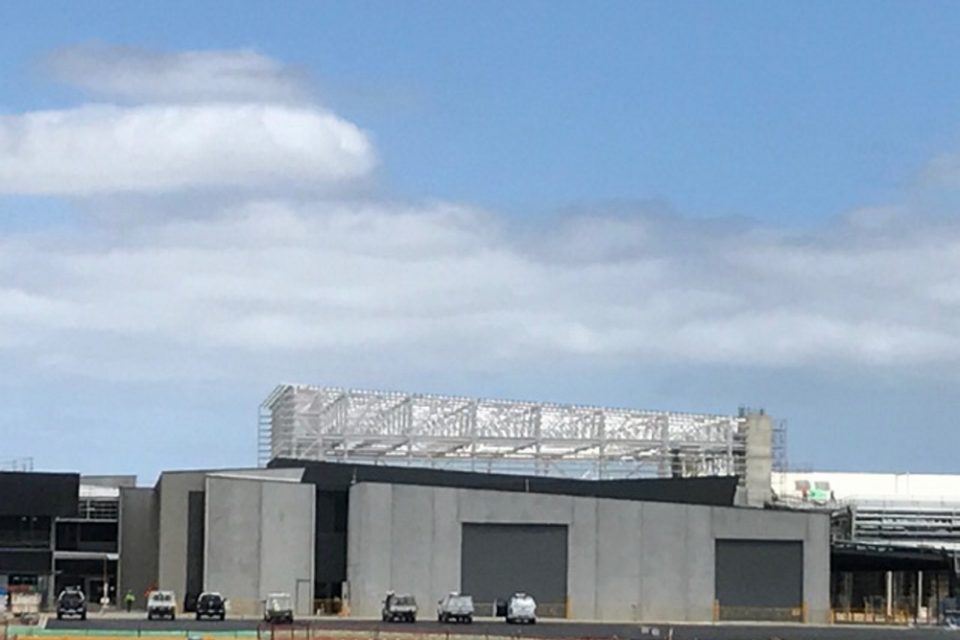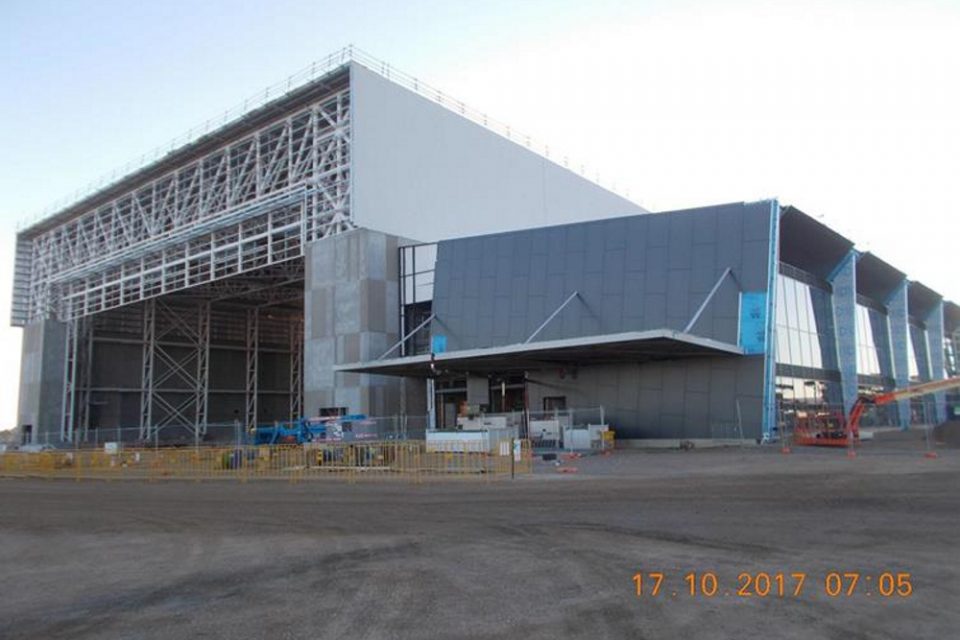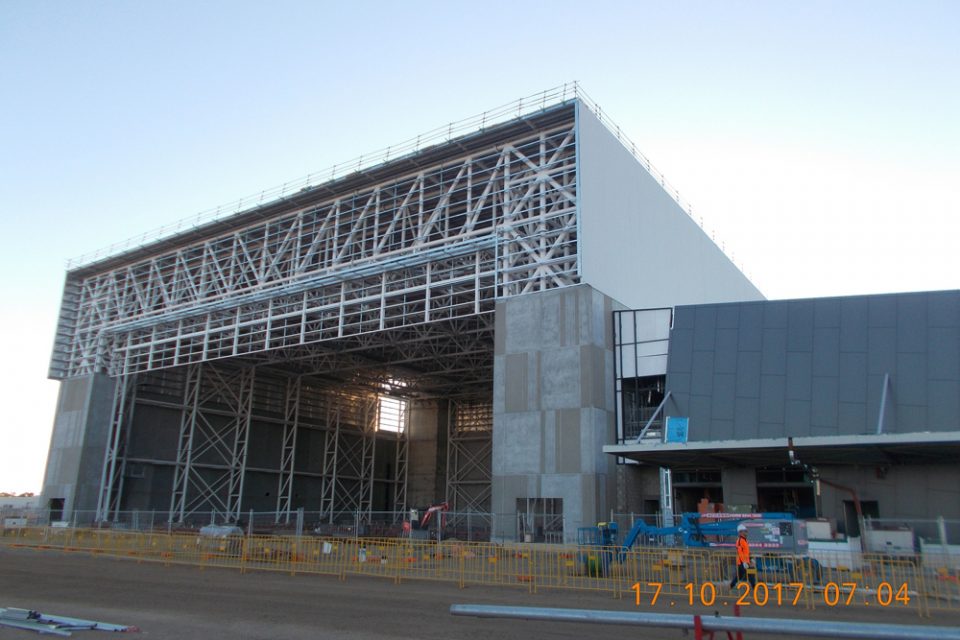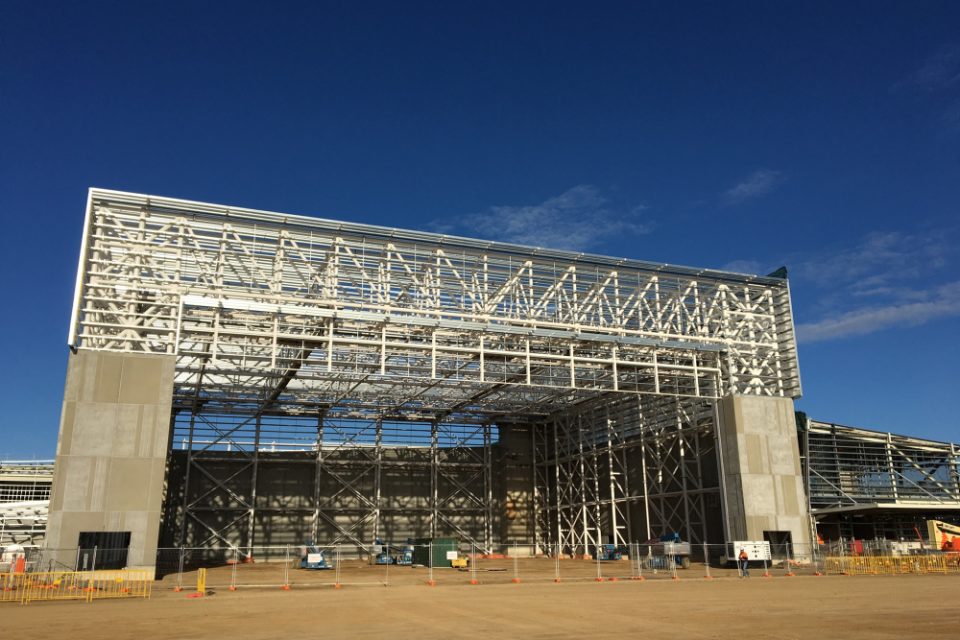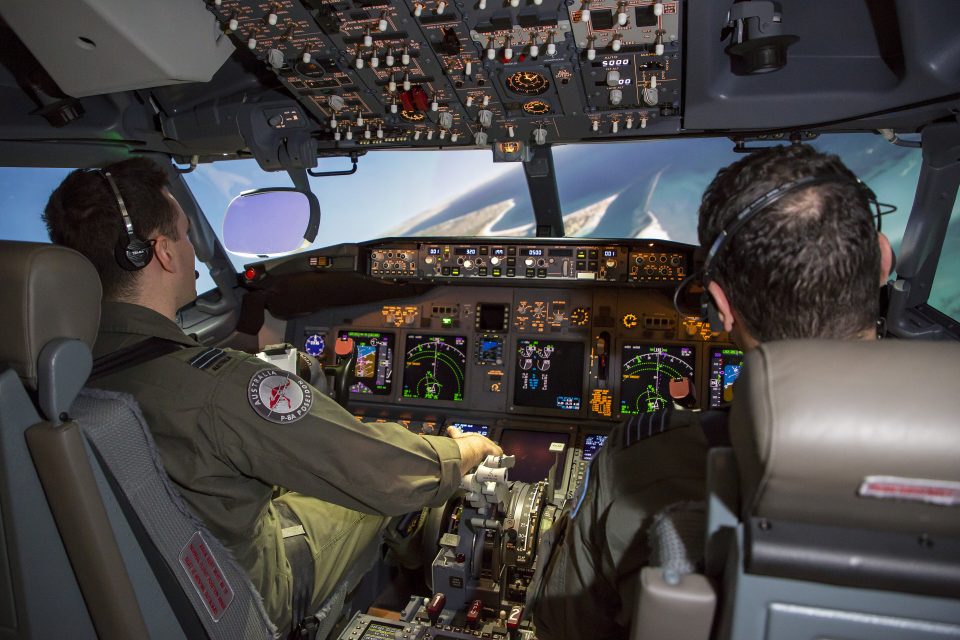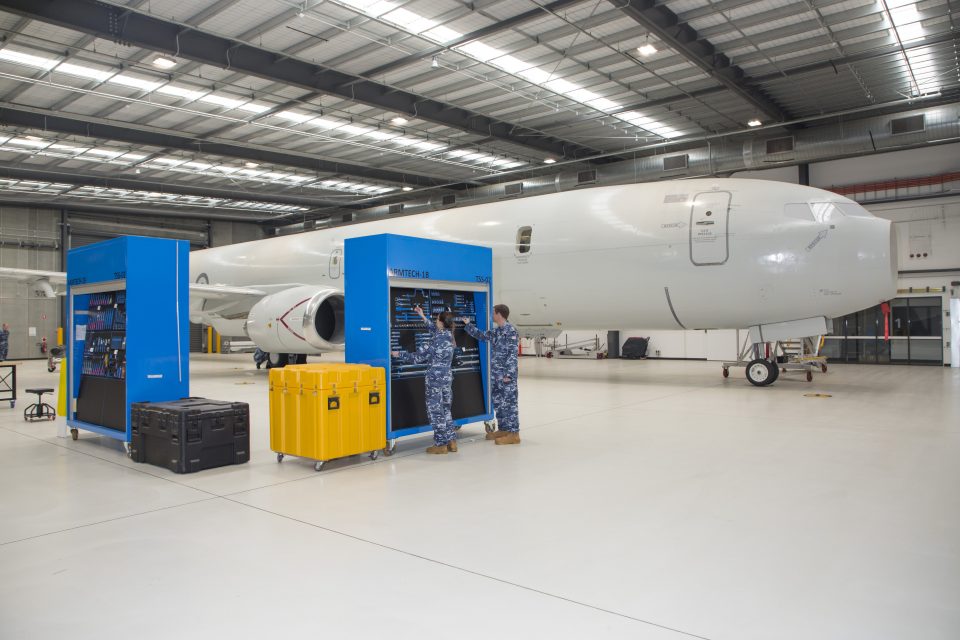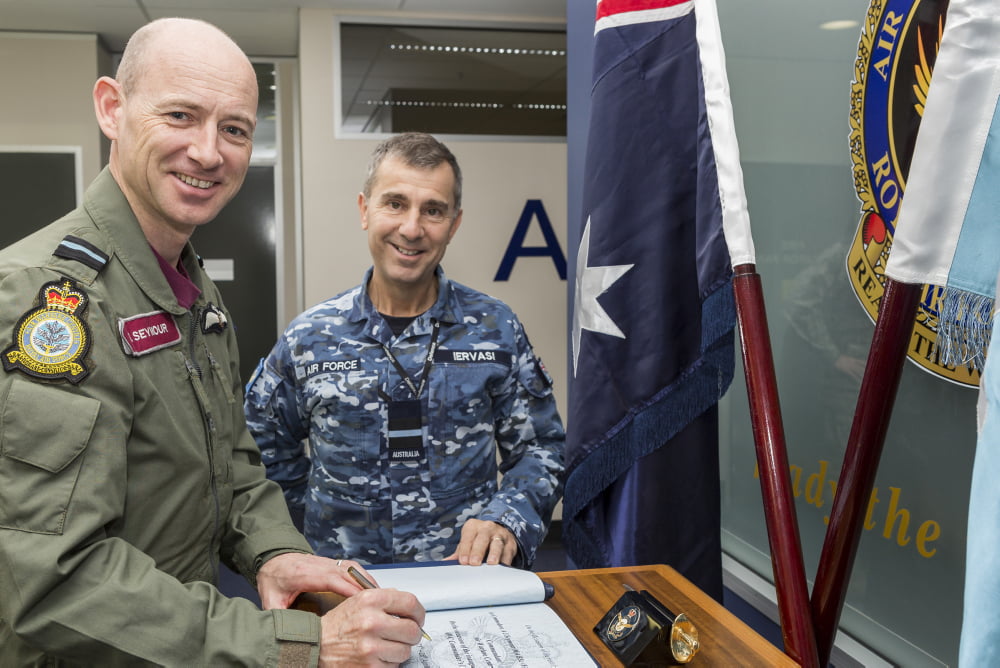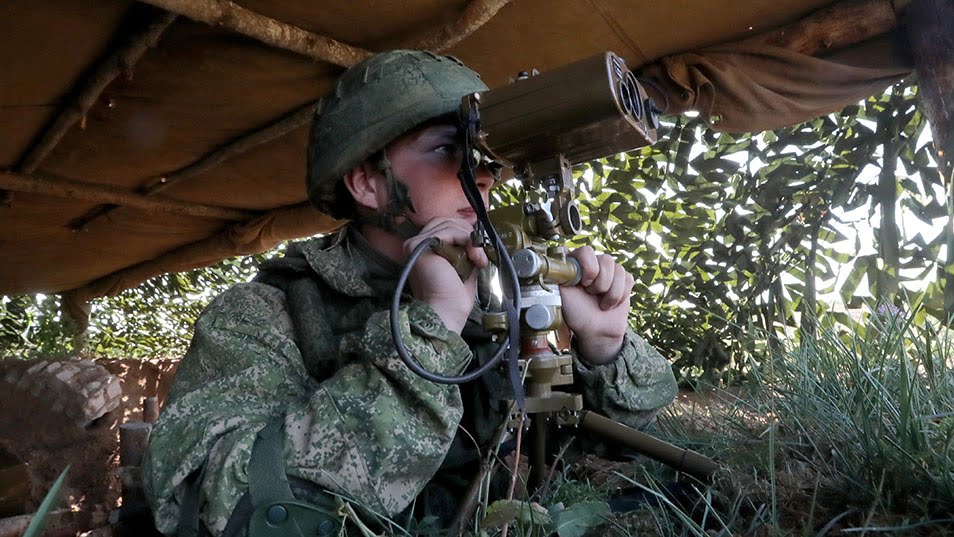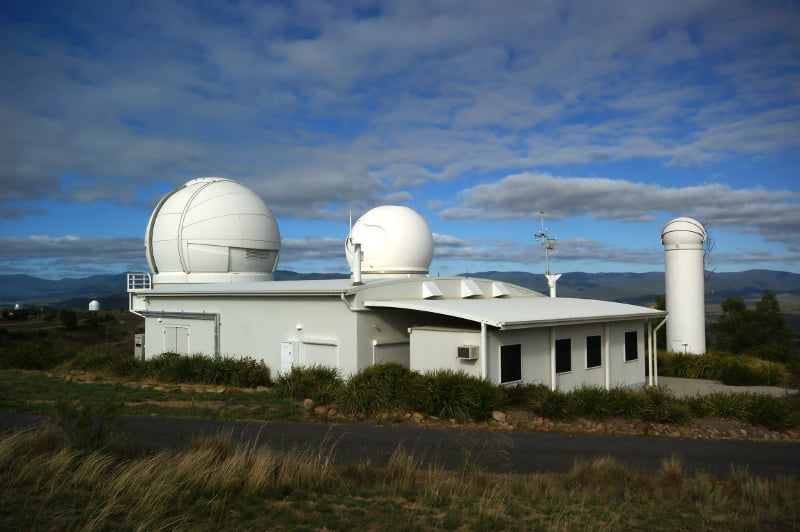By Robbin Laird
During my current visit to Australia, I had a chance to visit Electric Optical Systems (EOS) in Canberra and to meet with the founder and his senior team working on space systems.
EOS works closely with global customers, including the United States, and provides cutting edge lasers and sensors to provide for a variety of military solutions.
My colleague Edward Timperlake has written about the central significance of what he calls the payload-utility function for 21stcentury forces, and the reversal between platforms and payload utility capabilities within the kill web, which various platforms in the combat force integrate to provide the desired, combat effect.
To understand Payload/Utility with full honor to John Boyd, it can be noted that Observe/Orient (OO) is essentially target acquisition, and Decide/Act (DA) is target engagement. Thus there is a very simple formula, better and better TA and TE =more effective employment of all payloads available to the battle commander.
And within this focus, the roles of classic platform providers and payload enablers are shifting. Increasingly, the platform is about being able to operate, empower and to operate upgradeable payloads.
Or put another way, payload/utility companies are becoming either the new prime contractors or the key systems houses enabling platforms.
EOS is a payload/utility provider.
They provide a range of systems from enablement of space-based capabilities to a variety of land capabilities as well.
EOS operates in two sectors: Defence Systems and Space Systems.
EOS Defence Systems specialises in technology for weapon systems optimisation and integration, as well as ISR (Intelligence, Surveillance and Reconnaissance) for land warfare. Its key products are next-generation vehicle turrets and remote weapons systems.
EOS Space Systems specialises in applying EOS-developed optical sensors to detect, track, classify and characterise objects in space. This information has both military and commercial applications, including managing space assets to avoid collisions with space debris, missile defence and space control.
http://www.eos-aus.com/sites/default/files/Space%20Update%201%20August%202018.pdf
EOS 2018
During my visit to Canberra, I spent an evening at the Mt Stromlo Space Research Facility where EOS has a laser tracker for space systems.
The entire facility is robotized with only about 30 persons needed to service the operational facility.
The laser tracker at Canberra is connected with remote locations throughout Australia where similar robotized laser trackers create a significant capability to provide for space situational awareness.
Of course, such a laser capability provides a base line for growth in the laser-based engagement area with regard to space as well.
I met with the founder and well-known scientist/entrepreneur Dr. Ben Greene as well as the CEO of EOS Space Systems, Professor Craig Smith and the key software engineer, Dr. James Bennett. They provided an overview on the capabilities and the growth path for their systems directed to space-based SA and related capabilities.
At the end of the evening, I had a chance to interview Dr. Greene and to get his perspective on the way ahead.
Question: Let us start by talking about your approach to land systems.
You are a payload company and how do you see the evolution of the platform/payload relationships going forward?
Dr. Greene: In the land warfare sector, we would characterize our payloads as weapon systems.
They are modular and designed to be external to the vehicle.
We are optimized when the platform design approach focuses on modularity, which clearly is the way ahead for vehicles for ground forces.
We have a weapon system family that doesn’t require changes to anything in the platform and we can change the payloads rapidly.
For example, one could have a payload which was the standard 12.7 millimeter machine gun, an M2, or you could have a 30 millimeter cannon firing fused rounds and equipped with a javelin missile.
The two payloads would be interchangeable within 30 minutes on top of that platform, and nothing in the vehicle would change.
The internal software in the vehicle that we supply would sense exactly what the new payload was and adapt to it and adapt the user interface accordingly.
Question: How does this affect the classic relationship between the vehicle prime and the payload provider?
Dr. Greene: There clearly is a change underway.
Our payloads typically cost more than the platforms that they would be fielded on.
And so in some cases we are invited by the customers to be the vehicle integrator or what you would call the prime.
Customers generally are becoming quite savvy about the fact that the payloads are the core value, and the mission is in the payload.
Yet the platform has got to be a viable platform to deliver that payload into combat, but at the same time, the customers are increasingly recognizing that the payload performs the mission.
Question: Another aspect of the payload focus is an expectation that you’re designing the payload with regard to ongoing modernization or put in other terms, you are building a more rapidly upgradable payload.
How should one view this dynamic?
Dr. Greene: Our customers have moved from playing checkers to chess, because they’re thinking six moves ahead.
As we build a capability with a blue team, we have a red team engaged throughout to anticipate obsolescence and needed upgrades.
We’re now expected to deliver the technological architecture, which can deliver continuous upgrades, but ones which can anticipate changes which the reactive enemy might well make.
The opposing combatants are becoming more intelligent in the way that they deploy forces. And in particular, in asymmetric theater operations, you do find that the smaller irregular forces are incredibly innovative,
They’re often supported by major powers, so they have very good intelligence capability. They have what we would call a back room that’s supporting them with great intelligence on how to exploit weaknesses and what’s just been fielded in the last six months against them.
This means that the sophistication of some of the asymmetric combat forces is quite remarkable today.
And so that’s the environment that we are working in as a payload provider. We’re delivering payloads that have had to be pre-mapped to at least to at least two levels of response to what we will field currently.
Question: Let us turn now to the space side of your business. Could you describe the focus of your payload business in this domain?
Dr. Greene: We have built core capabilities to enhance situational awareness in space. We irradiate certain areas of space with lasers, and we then analyze the reflected returns.
We can determine range from that. We can also determine other elements of the spacecraft from a light signal directed at that spacecraft.
We have been in this business area for 40 years.
Question: How would you describe the complementarity of radars with lasers in terms of providing key ISR performance?
Dr. Greene: They’re very complimentary. Radars are exceptionally good at detecting anything that’s moving in a large area of space. Lasers are very good at characterizing that object and that motion very accurately.
For example, we can detect UAVs with radars and kill them with lasers.
The same thing applies on a much larger scale in space.
So space is really consists of two domains. There’s 2,000-kilometer zone around the Earth, which is the lower Earth orbit.
In the space domain above two or three thousand kilometers, only optics applies, and so the lasers can operate to two or three times the range that radars can operate, and beyond that we have passive optical techniques with extreme range, where both laser and radar techniques fail.
And so the entire space domain from 3,000 kilometers to 50,000 kilometers is managed optically with lasers and light.
Question: Your work is rooted in a very strong working relationship between Australia and the United States.
How would you describe that relationship?
Dr. Greene: I think that there’s a very strong two-way relationship.
Australia can offer special aspects of territory in terms of where we sit in the world physically, in terms of our geography. In addition, our technology combined with operating within our specific climate, means that if we deploy optical technologies from Australia, they are of immense value in terms of the information captured from the platforms that we deploy here.
That information can complement and support the intelligence database that US would apply for space information. And we would like to contribute to space information superiority for the alliance in that sense.
We’ve had a very strong program here that has always been a joint program with the US from its inception.
There’s always been significant US participation in our program.
Question: But I would note that talking to you and to your staff and looking at your enterprise, as a whole is like a trip back into time for me in one key sense – you have a very lean operation and you are not afraid to test and fail.
It is like going back into time in the 1970s and 1980s in the United States.
How does it feel to be both a time capsule and a key driver for 21stcentury innovation?
Dr. Greene: I would tend to agree with the sentiment, The processes that we operate here are a linear extension of the process that we developed jointly and in complete harmony with the US during the ’60s and ’70s and ’80s.
And those processes were very efficient.
We’re talking about a development process for advanced technology that was aggressive. It was well risk mitigated. It had woven into it an integrated operational concept.
The red team analysis was at the table through every design review, so the entire design process was red teamed continuously, not at the end.
The processes are not risk averse.
They are risk mitigated.
We have never been risk averse, but every time we fall over, we have to recover very quickly.
And so I think one thing that we still have, which I see missing in some parts of the world, is that tremendous technological aggression that the US had in the ’70s and ’80s.
And I’m not saying it’s not there now.
It’s just not as evident, and I think it’s muted by a lot more administrative process now than it was previously.
And we haven’t been encumbered by that here.
Appendix
May 30, 2016
Space conference at Mount Stromlo
CLOSE to 100 of the world’s top space environment researchers will this week congregate on Mount Stromlo to discuss ways to clean up the masses of space debris currently orbiting earth; the same debris that recently cracked a window of the International Space Station.
The Space Environment Research Centre’s (SERC) International Research Colloquium, to be held from 31 May – 1 June, is the premier event of the year for the Canberra-based international research organisation.
SERC Chief Executive Officer, Dr Ben Greene, says the Research Colloquium will bring together researchers, industry and space agencies to collaborate, share resources and knowledge to enhance their research outcomes. The purpose of SERC’s collaborative research programs is to develop methods to remove the estimated 170 million pieces of man-made space debris that currently orbit the earth endangering vital space infrastructure.
“More than AUD$1 trillion worth of global space infrastructure is currently at risk from an ever increasing amount of space debris,” Ben said.
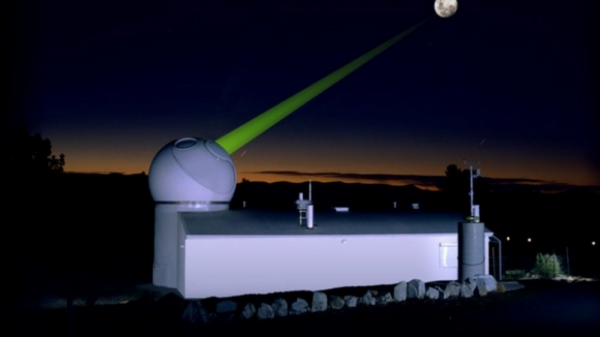
“Globally, space infrastructure delivers essential and highly efficient services including communications, navigation, resource management and climate change monitoring. This infrastructure is at risk from space debris ranging in size from spent rocket stages as large as busses, to flakes of paint measuring millimetres. This debris can travel at speeds in excess of 20,000km/h, so even a single flake of paint can badly damage or destroy a vital piece of space infrastructure. The dangers of space debris were highlighted earlier this month when the International Space Station’s Cupola window was badly damaged by a minuscule piece of debris thought to be a paint flake.
“Working at SERC’s multi-million dollar research facility, SERC researchers are tackling the problem by enhancing capability in tracking, characterising and identifying objects in orbit, orbit determination and predicting behaviours of space objects.
“SERC is a joint public, private partnership between the Australian Government and organisations including Canberra based company EOS Space Systems, the ANU, RMIT University, Optus Satellite Systems, Lockheed Martin Space Systems and the Japanese National Institute of Information and Communications Technology (NICT).
“International collaboration is essential for a global problem such as space debris.
“There are estimates of more than 300,000 items of debris orbiting the earth greater than 10cm. There is so much debris that it is colliding with itself, and creating more debris. A catastrophic avalanche of collisions which could quickly destroy all orbiting satellites is now possible.
“Our initial aim is to reduce the rate of debris proliferation caused by new collisions, and then to remove debris using ground-based lasers. There have been strenuous efforts in many countries over the past decade to develop space debris mitigation technology. SERC brings together leading debris mitigation programs from around the world to create a team with the required critical mass of researchers, technology, funding and equipment. The resource commitments for SERC have come from every tier of space activity and are an indication of the international importance of this initiative.”
[Photo: The EOS Space Systems Satellite Laser Ranging Facility at the Space Environment Research Centre (SERC) in action tracking space debris, Mount Stromlo, Canberra. Credit: EOS Space Systems]
Dr. Laird is a Research Fellow at the Williams Foundation.
Recently, the ADF has picked EOS to work a new capability for the Australian Army.
EOS Wins Australian Defence Program
Canberra 24 August 2018
Electro Optic Systems, (ASX: EOS), acting through its subsidiary EOS Defence Systems Pty Limited, is pleased to announce that it has been selected as the remote weapon system provider for Phase 2 (Combat Reconnaissance Vehicle) of the Australian Army’s LAND 400 program. EOS tendered the R400S Mark 2 D-HD remote weapon station for this acquisition. This latest R400 variant is commencing full rate production to meet existing contracts in early 2019. It is expected that approximately 80 remote weapon stations for Land 400 Phase 2 would enter an existing manufacturing process from 2021.
Additionally, the LAND 400 Phase 3 tender released today requires that all tenderers ‘include the integration / use of’ the EOS Remote Weapon Station in their responses for the next Phase of the program. Phase 3 seeks to deliver 450 Infantry Fighting Vehicles and 17 Manoeuvre Support Vehicles from 2024/25 onwards.
These two events represent a significant step forward for EOS Defence Systems as the primary RWS provider to the Australian Army. Combined with the existing in-service 230+ EOS remote weapon stations these additional systems will create a larger EOS RWS fleet across multiple vehicles and deliver significant improvements in operational effectiveness and cost of ownership for Australia’s combat forces.
The R400S Mark 2 Direct Drive-Heavy Duty (D-HD) remote weapon station is the latest high precision product from EOS Defence Systems and can mount different weapons up to and including the M230LF lightweight 30mm cannon and anti-tank guided missiles.
The LAND 400 program comprises four phases which are summarised below:
- LAND 400 Phase 1 – Project Definition Study (completed);
- LAND 400 Phase 2 –Combat Reconnaissance Vehicle Capability
- LAND 400 Phase 3 –Mounted Close Combat Capability; and
- LAND 400 Phase 4 – Integrated Training System.


